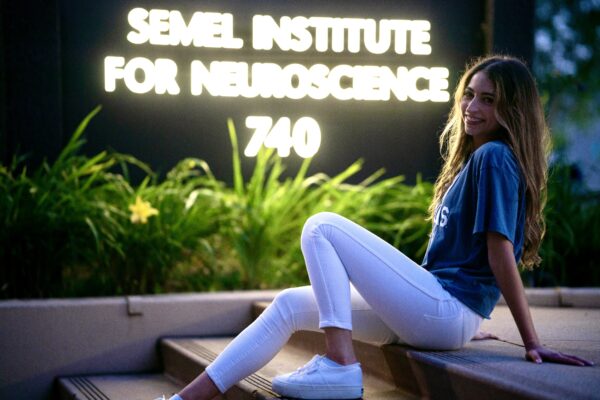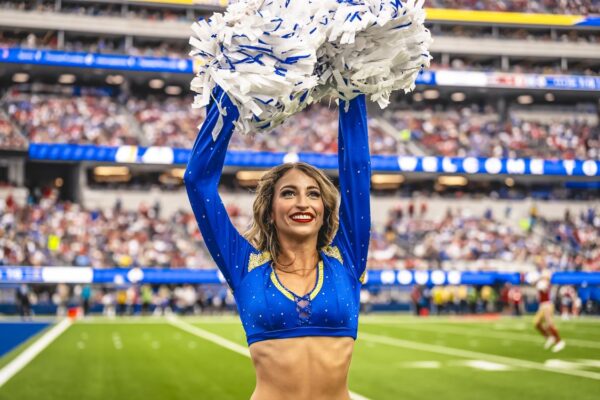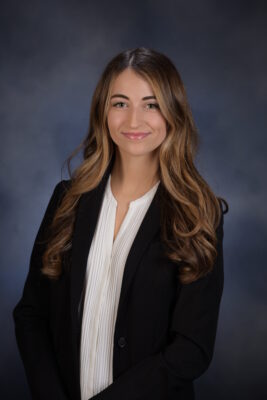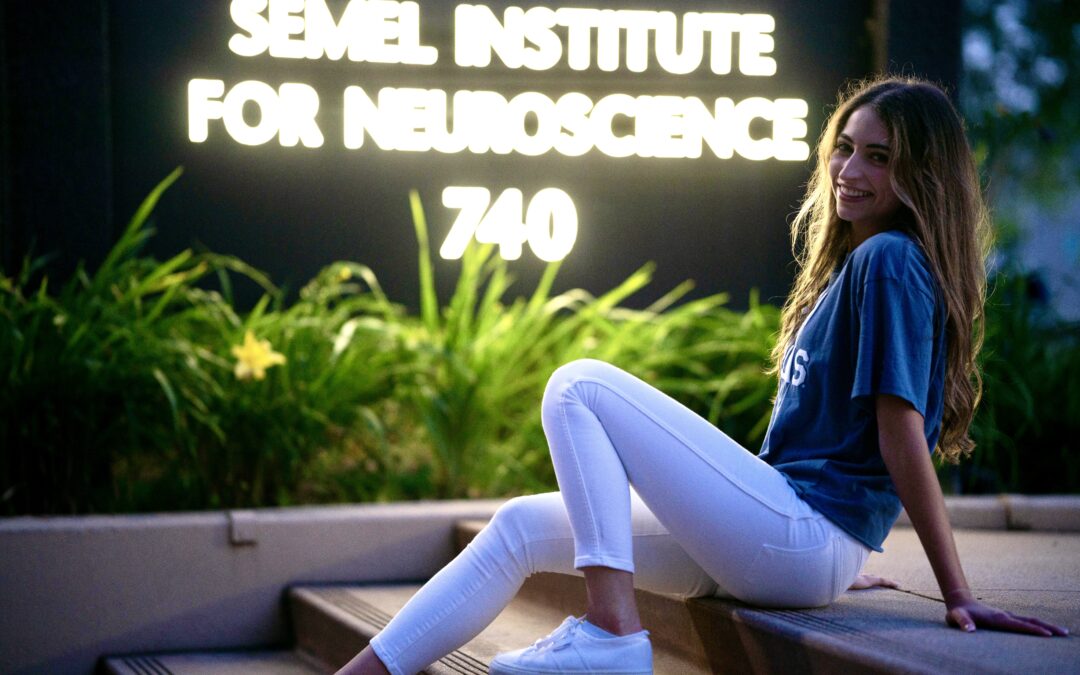Introducing our newest SciCheer, Aria! Aria graduated with a degree in Dance and Neuroscience, and is now pursing medical school. Read on to learn more about her science and cheer background!
What got you interested in STEM?

I was first inspired to pursue a career in medicine through experiences with my childhood best
friend, Naomi, who had muscular dystrophy. Naomi planted the seed for my fascination with the
body and its perceived limitations of which I could explore through movement and medicine.
She provided me with early motivation to become an advocate for others, especially individuals
with disabilities. I then decided to shadow within various medical specialties to solidify my
passion for the field. The experience of shadowing a pediatric neurologist, having the privilege
of listening to patients’ stories, problem-solving, making a diagnosis, and treating their
conditions by utilizing an in-depth knowledge of our body’s systems, made me confident that
this was the career for me.
What made you try out to be a cheerleader?
My family instilled in me a great love of football since I was a little girl. To this day, I spend every Thursday, Sunday, and Monday during football season glued to the TV. I have always admired all of the people involved in making football the extraordinary spectacle that it is from the athletes to the cheerleaders. I became an NFL cheerleader to connect with passionate fans
and members of my community, become a role-model for the youth of Los Angeles, and be part of a diverse, inclusive, and uplifting team. Being a professional cheerleader is the perfect way to express my love of football, gratitude for the city, and passion for performing.
Can you describe what you are working on?
I am currently conducting pediatric neurology research at UCLA, as well as shadowing physicians and volunteering at the Venice Family Clinic before attending medical school. Specifically, I investigate infantile spasms, also known as West syndrome, which is a rare form of epilepsy that typically begins in infancy. These types of seizures involve sudden, brief muscle contractions, often occurring in clusters. Infantile spasms can affect a child’s development, impacting motor skills and cognition. Early intervention is crucial. I am presently evaluating the association between infantile spasms and autism spectrum disorder through an analysis of patients’ electronic medical records. I spend most of my research time in the computer lab and utilize EEG reports and software like STATA for my analysis. My goal is to develop a greater understanding of treatment options, the developmental trajectory, and risk factors to improve the outcomes of patients with infantile spasms.

How do the qualities that make you a great cheerleader help you as a future doctor?
There are several commonalities between cheerleading and a career in medicine. Each field
requires discipline, a strong work ethic, collaboration, great communication skills,
professionalism, patience, time management, compassion, empathy, versatility, adaptability, and a passion for advocacy and helping others. My experiences in dance/cheerleading equip me with the skills to think on my feet, care for and connect with others, work in a team, and be tenacious in my pursuit of success.
Favorite cheer experience?
I was given the opportunity to travel to South Korea and meet and perform for service members at military bases. Our goal was to raise morale and bring a little bit of home to our veterans overseas. I stayed at two army bases, Camp Humphreys and Camp Casey. We also hosted a cheer clinic at Camp Humphreys, providing girls and boys with an opportunity to dance. I got to
hear stories from heroic veterans, host a Super Bowl event representing the reigning champions, and connect cheerleaders from other NFL organizations! I have also been gifted with experiences to travel to South Korea for the Seoul Friendship Festival, Japan to teach dance workshops,
Hong Kong for the Chinese New Year Festival, and Mexico to participate in flag-football clinics with the Los Angeles Rams organization.
Favorite science experience?

After spending months gathering data for my research project on the increased prevalence of autism among infantile spasms patients, I submitted my abstract to a neurology conference. It was gratifying to hear that my abstract was accepted for a platform presentation at the American Academy of Neurology annual conference. This honor is not often given to pre-med students, so it inspired me to continue to put myself and my research out there.

